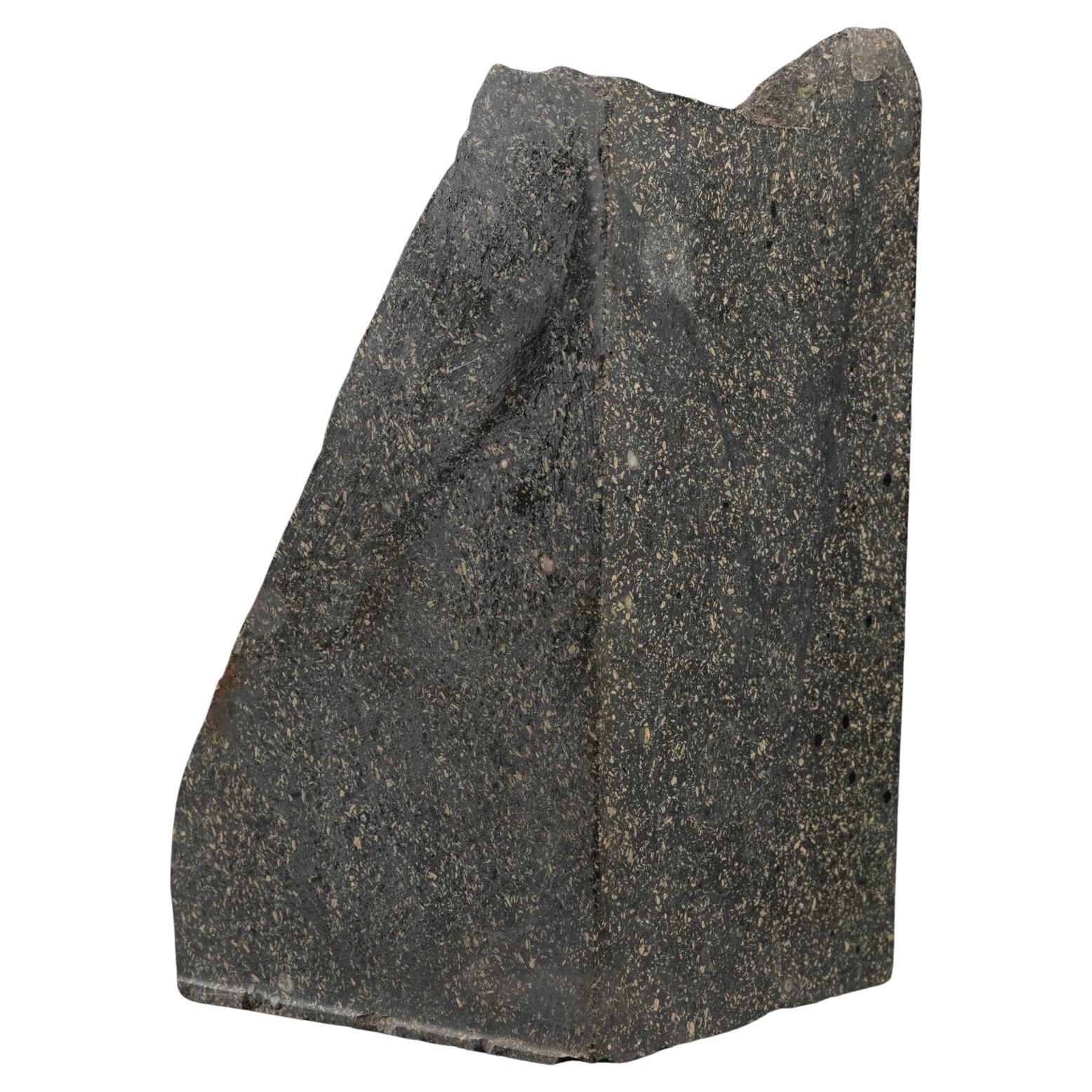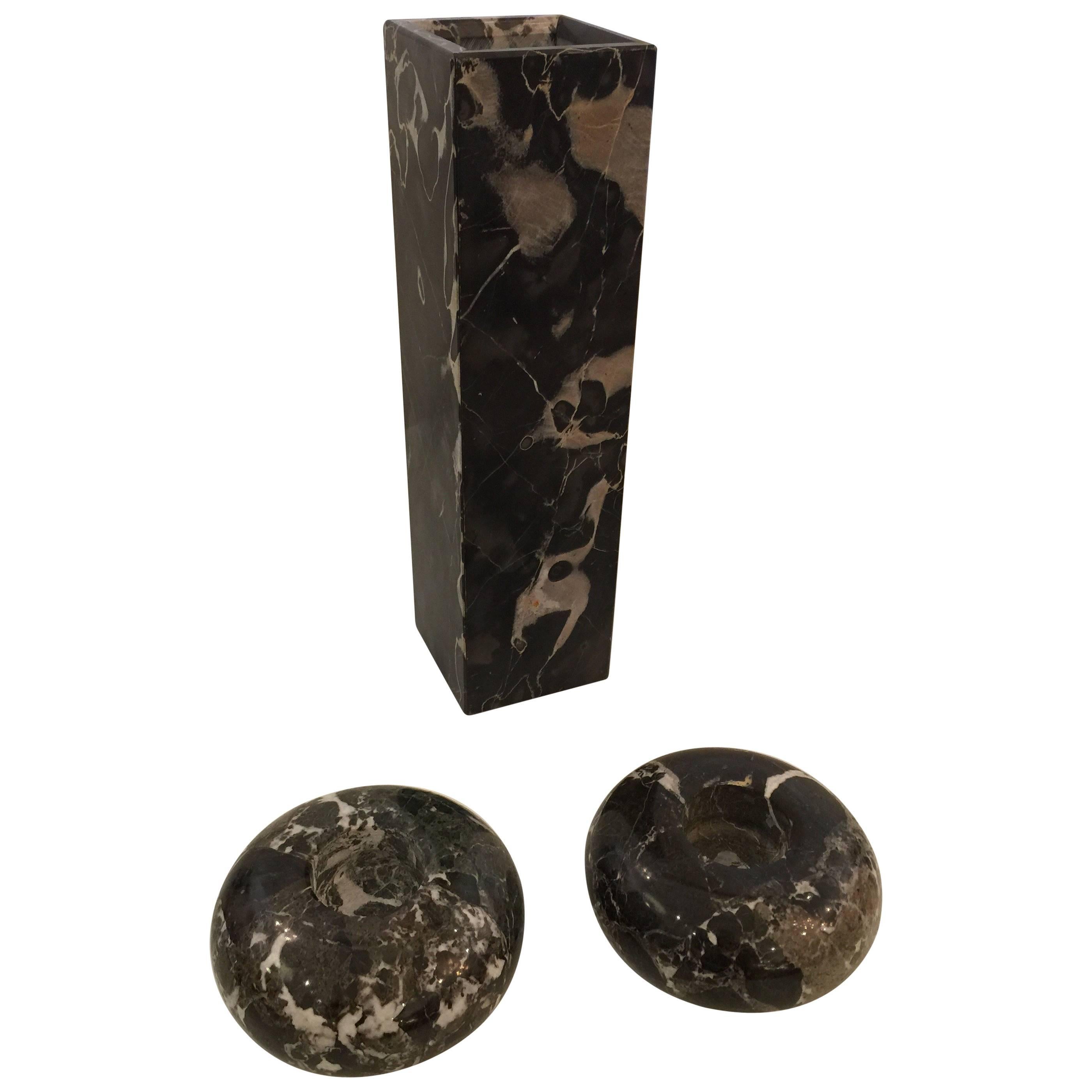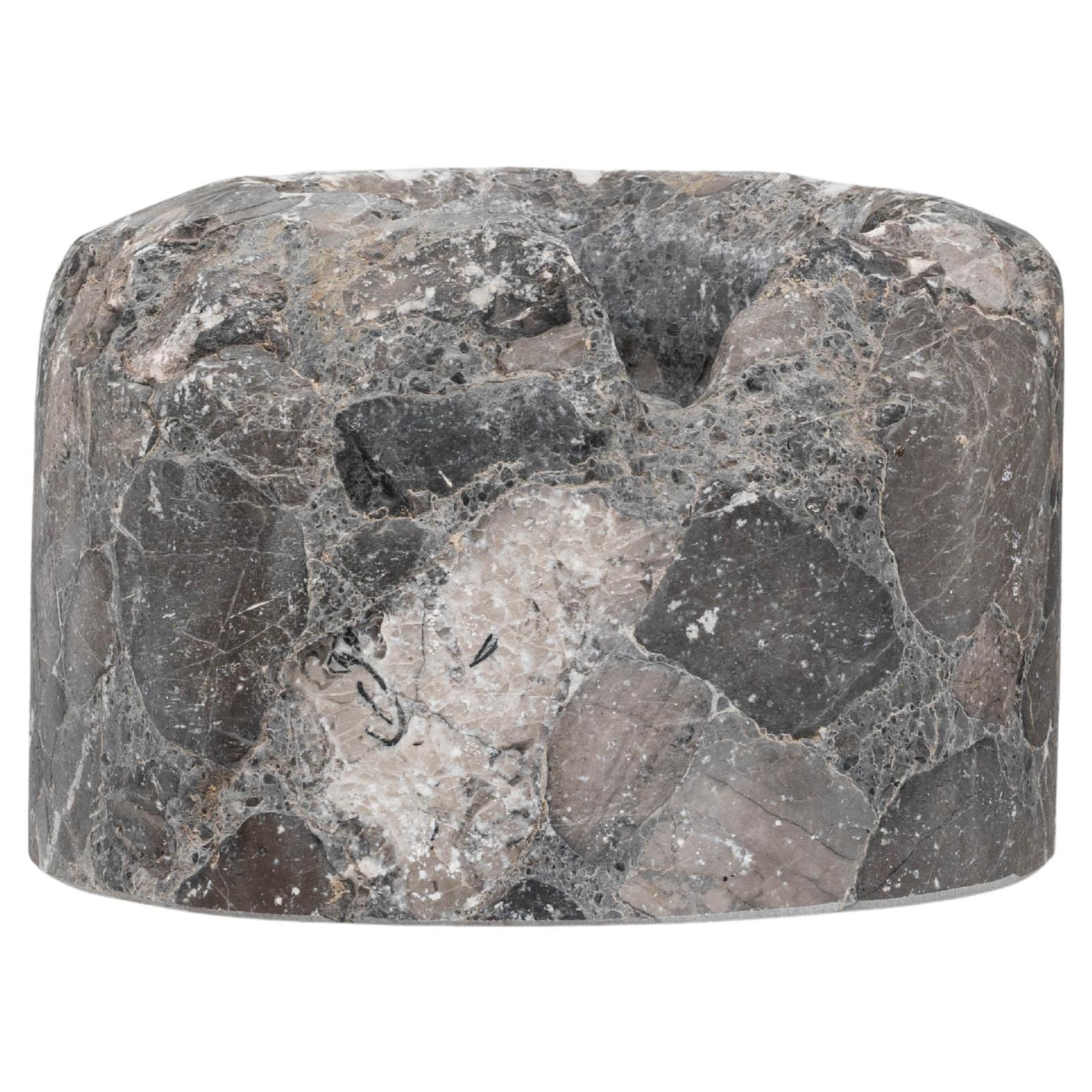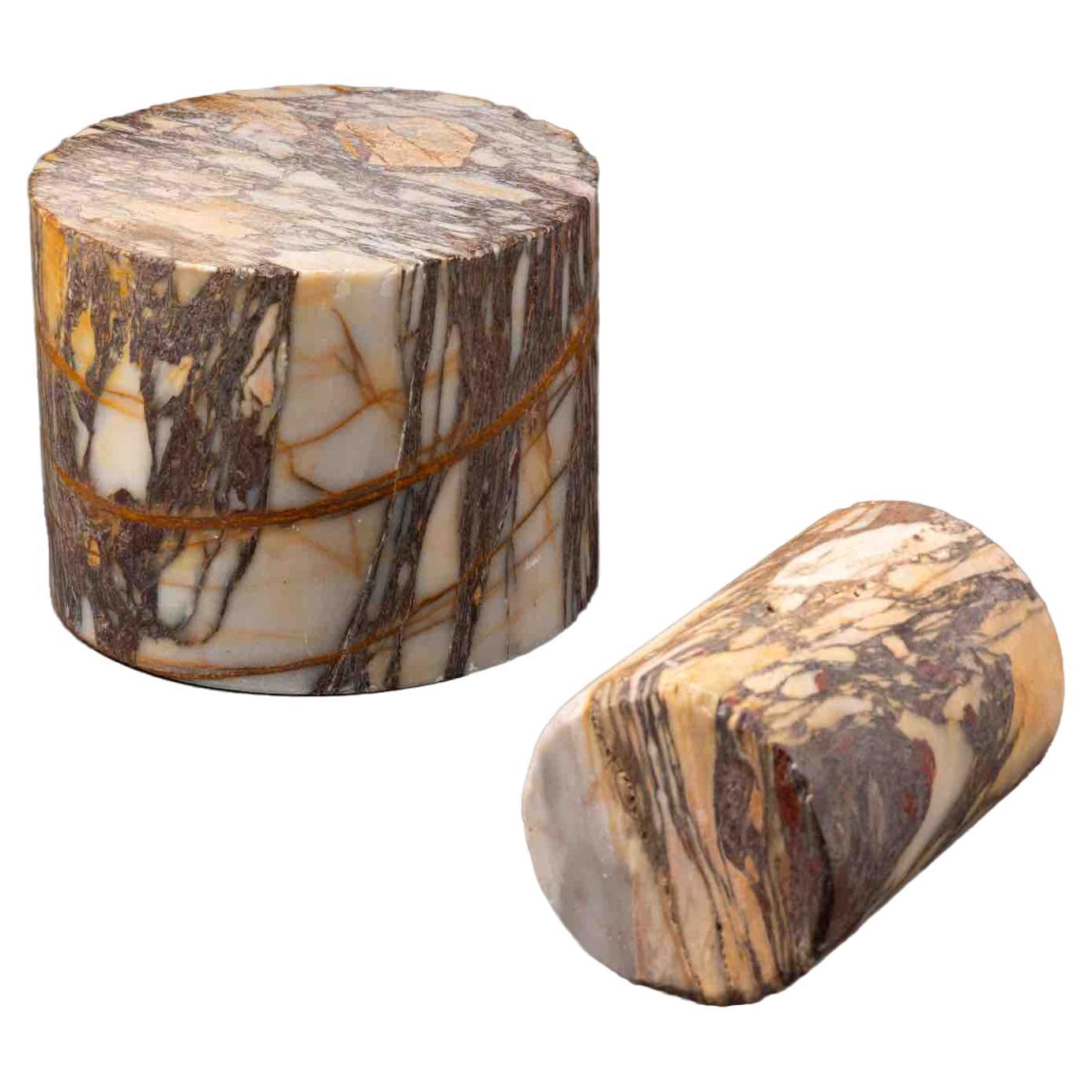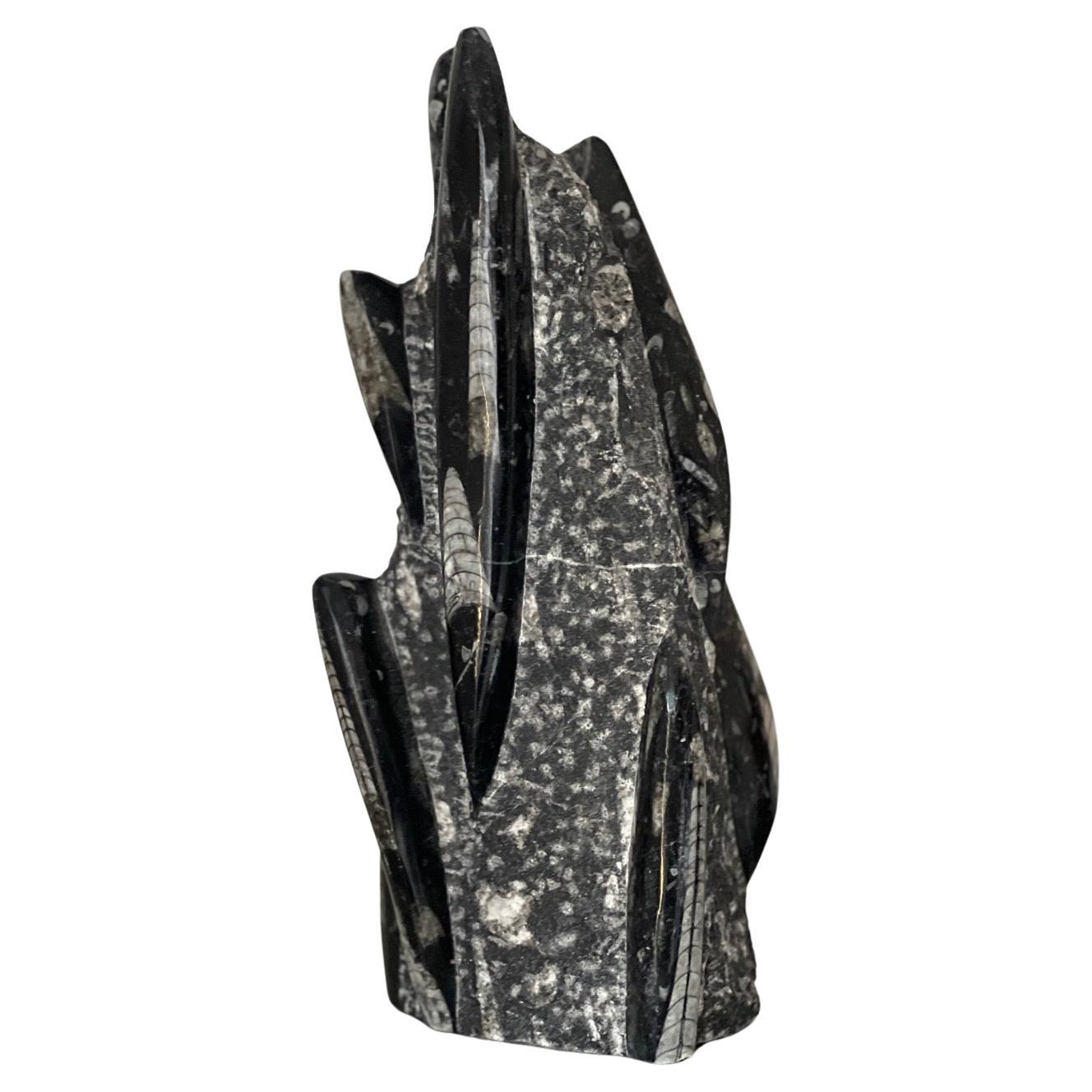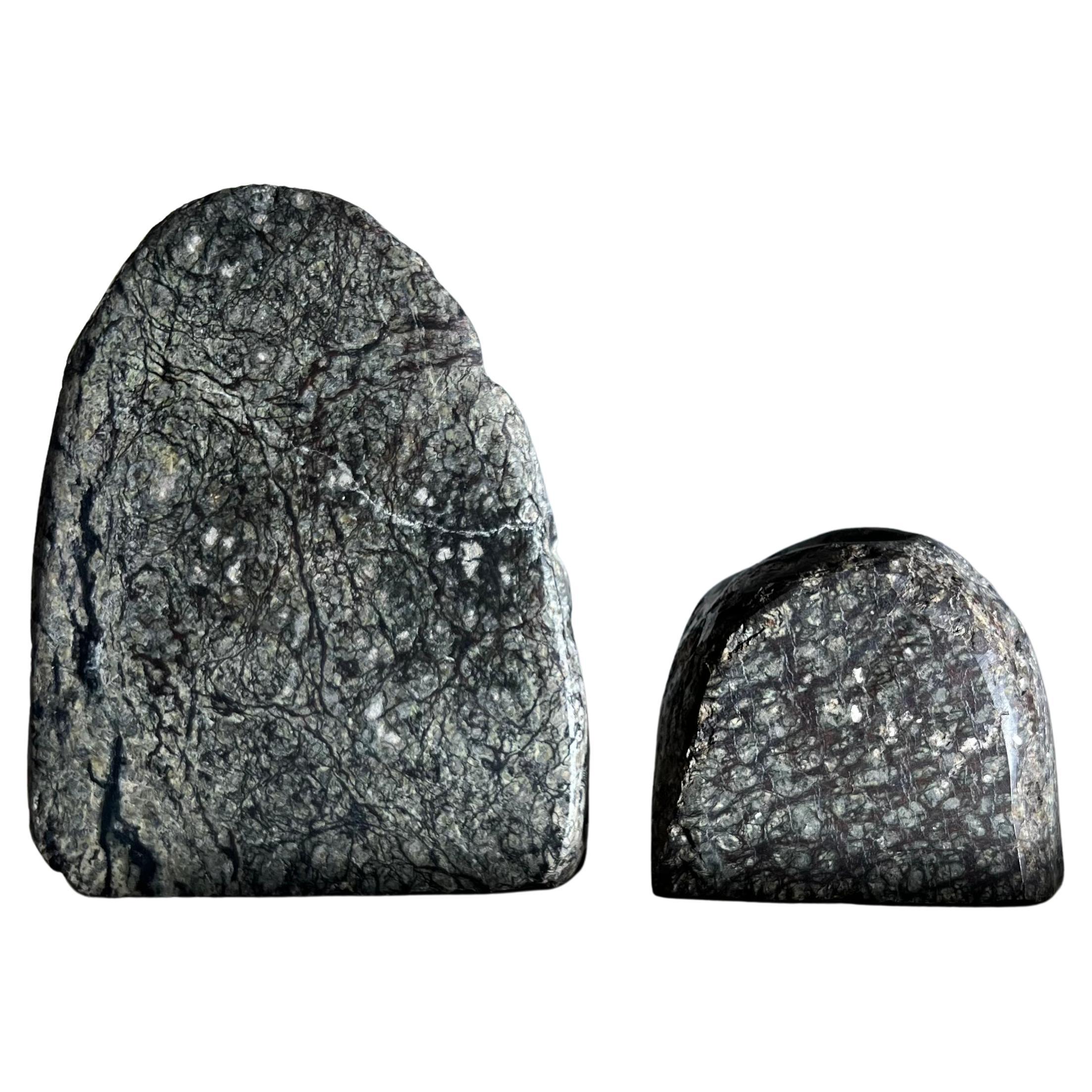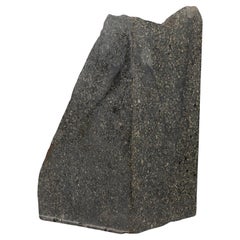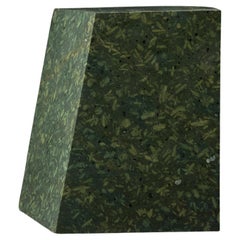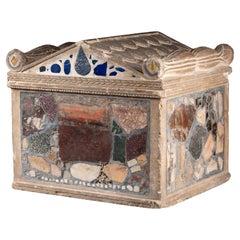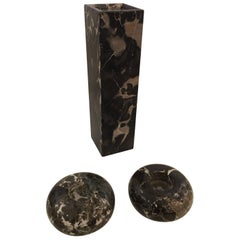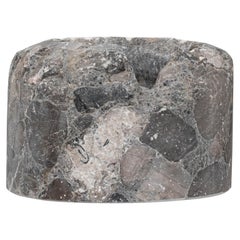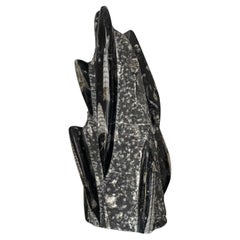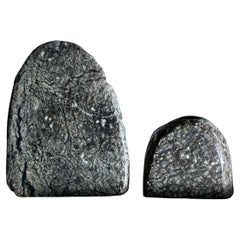Objekte ähnlich wie Two bases in rare Breccia Africano and Granito Nero
Möchten Sie mehr Bilder oder Videos?
Zusätzliche Bilder oder Videos von dem*der Anbieter*in anfordern
1 von 5
Two bases in rare Breccia Africano and Granito Nero
1.800 €Einschließlich MwSt.
Angaben zum Objekt
Two bases in rare Breccia Africano and Granito Nero
Cylinder in Breccia Africano
H 12.5 × D 7 cm
Cylinder in Granito Nero
H 6 × D 9 cm
These two cylindrical bases made of rare marble are ideal for displaying ancient or modern objects and sculptures. Their pure shape and the beauty of the raw material also make them suitable for decorating a table or a bookshelf.
Breccia Africano, also known as Africano marble, is an exceptional and historically significant stone that was extensively used in ancient Rome. Characterized by its striking color contrasts, Africano marble consists of mottled pink, red, and green fragments set within a dark grey or black matrix. This distinctive aesthetic made it one of the most highly prized marbles of antiquity.
The quarries that supplied Africano marble were lost for centuries, leading to speculation about their origin. Faustino Corsi, in his renowned catalog of marbles, incorrectly assumed that the marble originated from the Greek island of Chios. However, the true source of Africano marble was rediscovered in 1966 by Michael Ballance. He located remnants of the stone near Kara Göl, a flooded quarry at Sigacik, the site of the ancient city of Teos in modern-day Turkey. A second quarry was identified at Beylerköy, about 15 kilometers away.
Roman stone-cutters named the marble "Africano" due to its intense color contrasts. It was among the first colored marbles introduced in Rome and saw its peak usage during the reigns of the emperors from Augustus to the Antonines. Even during the reign of Diocletian (late 3rd to early 4th century AD), Africano marble was still considered one of the most expensive marbles available. Its high value ensured that it was reserved primarily for use by emperors and other elites, and curiously, it is rarely found in Asia Minor, despite being quarried there.The Edict on Maximum Prices, issued by Emperor Diocletian in AD 301, listed Africano marble at 150 denarii per foot (approximately 29.57 cm). This made it more expensive than cipollino marble (100 denarii per foot) but less costly than marbles from Phrygia and Numidia (200 denarii per foot). The pricing reflects its esteemed status, though it remained slightly more accessible than the most luxurious marbles of the time (porphyry and serpentine).
Africano marble was extracted in large quantities and transported to Italy and North Africa, where it was used extensively during the 1st and 2nd centuries AD. It was particularly favored in Augustan architecture (late 1st century BC to early 1st century AD) and was frequently employed in Rome’s grand structures. Notably, two monumental thresholds made from Africano marble—one in the Pantheon and another in the Capitolium at Ostia—demonstrate its continued use during the Hadrianic period (early 2nd century AD), even after the quarries had been largely depleted.
Africano marble stands as a testament to the craftsmanship and aesthetic sensibilities of the ancient Romans. Its specific dark coloration and historical significance continue to captivate scholars and enthusiasts, securing its place among the most distinguished marbles of antiquity.
- Maße:Höhe: 12,5 cm (4,93 in)Durchmesser: 7 cm (2,76 in)
- Stil:Neoklassisch (Aus dem Zeitalter)
- Materialien und Methoden:
- Herkunftsort:
- Zeitalter:
- Herstellungsjahr:19th century
- Zustand:Abnutzung dem Alter und der Nutzung entsprechend.
- Anbieterstandort:Bruxelles, BE
- Referenznummer:1stDibs: LU6666245072202
Anbieterinformationen
5,0
Geprüfte*r Anbieter*in
Jede*r Anbieter*in erfüllt strenge Standards bezüglich Echtheit und Zuverlässigkeit
1stDibs-Anbieter*in seit 2022
15 Verkäufe auf 1stDibs
Typische Antwortzeit: 1 Stunde
- VersandAngebot wird abgerufen …Versand von: Bruxelles, Belgien
- Rückgabebedingungen
Einige Inhalte dieser Seite wurden automatisch übersetzt. Daher kann 1stDibs nicht die Richtigkeit der Übersetzungen garantieren. Englisch ist die Standardsprache dieser Website.
Authentizitätsgarantie
Im unwahrscheinlichen Fall eines Problems mit der Echtheit eines Objekts kontaktieren Sie uns bitte innerhalb von 1 Jahr für eine volle Rückerstattung. DetailsGeld-Zurück-Garantie
Wenn Ihr Objekt nicht der Beschreibung entspricht, beim Transport beschädigt wurde oder nicht ankommt, kontaktieren Sie uns bitte innerhalb von 7 Tagen für eine vollständige Rückerstattung. DetailsStornierung innerhalb von 24 Stunden
Sie können Ihren Kauf jederzeit innerhalb von 24 Stunden stornieren, ohne jegliche Gründe dafür angeben zu müssen.Geprüfte Anbieter*innen
Unsere Anbieter*innen unterliegen strengen Dienstleistungs- und Qualitätsstandards, wodurch wir die Seriosität unserer Angebote gewährleisten können.Preisgarantie
Wenn Sie feststellen, dass ein*e Anbieter*in dasselbe Objekt anderswo zu einem niedrigeren Preis anbietet, werden wir den Preis entsprechend anpassen.Zuverlässige weltweite Lieferung
Unsere erstklassigen Versandunternehmen bieten spezielle Versandoptionen weltweit, einschließlich individueller Lieferung.Mehr von diesem*dieser Anbieter*in
Alle anzeigenGroßes kaiserliches Exemplar aus schwarzem Porphyr
Seltenes und großes Architekturfragment aus kaiserlichem schwarzem Porphyr
teilweise poliert,
23,5 x 15 x 12 cm
Porfido Nero ist eine seltene schwarze Varietät des kaiserlichen Po...
Kategorie
Antik, 15. Jahrhundert und früher, Italienisch, Klassisch-römisch, Natur...
Materialien
Porphyr
Zwei zylindrische, farbige Marmorexemplare
Zwei zylindrische Exemplare aus Breccia Skyros Marmor oder Settebassi
Diese beiden zylindrischen Exemplare eignen sich hervorragend als Buchstützen oder als Geschenk für Kunstwerke....
Kategorie
Antik, Spätes 19. Jahrhundert, Italienisch, Klassisch-römisch, Buchstützen
Materialien
Breccia-Marmor
2.080 € Angebotspreis / Set
20 % Rabatt
Eleganter Sockel aus Porfido Serpentino Antico
Elegantes Fragment aus Porfido Serpentino Antico
19,5 x 18 x 12 cm
Dieses schöne Fragment kann als Sockel aus seltenem Marmor verwendet werden, ideal für die Präsentation von antike...
Kategorie
Antik, 15. Jahrhundert und früher, Italienisch, Klassisch-römisch, Natur...
Materialien
Marmor
Grand Tour Cinerarium – Cinerarium – 18. Jahrhundert
Grand Tour Cinerarium aus dem 18.
Kalkstein, eingelegt mit römischen Marmorfragmenten und Fresken
Beschriftung der Fundstelle undeutlich auf den Fragmenten geschrieben ("forum trajan...
Kategorie
Antik, 18. Jahrhundert, Italienisch, Grand Tour, Urnen
Materialien
Kalkstein, Marmor
Zwei seltene Figuren in türkischer Kleidung – Venedig, frühes 17. Jahrhundert
Seltene Bronzen, die zwei Figuren in türkischer Tracht darstellen
Möglicherweise Suleiman der Prächtige in zwei verschiedenen Altersstufen
Bronzen, Alabastersockel
Venedig, Anfang 17...
Kategorie
Antik, 17. Jahrhundert, Italienisch, Renaissance, Figurative Skulpturen
Materialien
Alabaster, Bronze
Tisch aus Holz und schwarzem Marmor aus dem 17. Jahrhundert – Norditalien
Tisch aus Nussbaum und Marmor
Norditalien, 17. Jahrhundert
Holz und schwarzer Marmor
H 80,5 x L 114 x P 58 cm
Dieser elegante Tisch hat eine einzelne massive Marmorplatte, die dir...
Kategorie
Antik, 17. Jahrhundert, Italienisch, Barock, Beistelltische
Materialien
Marmor
Das könnte Ihnen auch gefallen
Nero Marquina Marmorvase und Kerzenständer
Von Angelo Mangiarotti
Dieses Set aus drei italienischen Nero Marquita Marmorartikeln ist im Stil von Sergio Asti oder Mangiarotti gehalten. Das schöne und schlichte Design dieser geometrischen Formen aus ...
Kategorie
Vintage, 1960er, Italienisch, Vasen
Materialien
Marmor
1.916 € / Set
19th Century European Marble Mortar
This 19th Century European marble mortar is a commanding and visually rich example of utilitarian craftsmanship. Carved from a unique conglomerate marble, the surface showcases an in...
Kategorie
Antik, 19. Jahrhundert, Europäisch, Figurative Skulpturen
Materialien
Marmor
Dekorative Fossilienstein-Skulptur-Skulptur aus Marokkanischem Orthoceras, Vintage
Fließende Formen - Dekorative Organische Kunst - Marokkanische Fossilienskulptur
Dies ist ein Angebot für ein freistehendes Orthoceras-Turm-Exemplar aus dem Atlasgebirge in Marokk...
Kategorie
Vintage, 1970er, Italienisch, Moderne der Mitte des Jahrhunderts, Nature...
Materialien
Kalkstein
624 € Angebotspreis
20 % Rabatt
Vintage-Kerzenhalter in Felsform aus echtem Stein, 1970er Jahre
Ein Paar Bouldercore-Kandelaber, 1970er Jahre. Töne von Basalt, Moos und Aubergine. Echter Stein - schwer. Gefilzte Böden. Abholung in LA oder weltweite Lieferung möglich.
Groß: 4,5"...
Kategorie
Ende des 20. Jahrhunderts, Brutalismus, Kerzenständer
Materialien
Stein
334 € Angebotspreis / Set
20 % Rabatt
Ein Paar italienische Säulen aus Breccia-Marmor
Ein Paar italienische Säulen aus Breccia-Marmor. Anfang des 20. Jahrhunderts.
36.24" h x 14" w x 14" d
Kategorie
Frühes 20. Jahrhundert, Italienisch, Architektonische Elemente
Materialien
Marmor, Breccia-Marmor
10.801 € / Set
SUITE OF THREE ITALIAN PAPERWEIGHTS aus geädertem schwarzem Marmor, 20. Jahrhundert
SUITE OF THREE ITALIAN PAPERWEIGHTS aus geädertem schwarzem Marmor, 20. Jahrhundert
Aus geädertem schwarzem Marmor, einer quadratisch, ein anderer konisch und der letzte pyramidenför...
Kategorie
20. Jahrhundert, Italienisch, Moderne, Buchstützen
Materialien
Marmor
